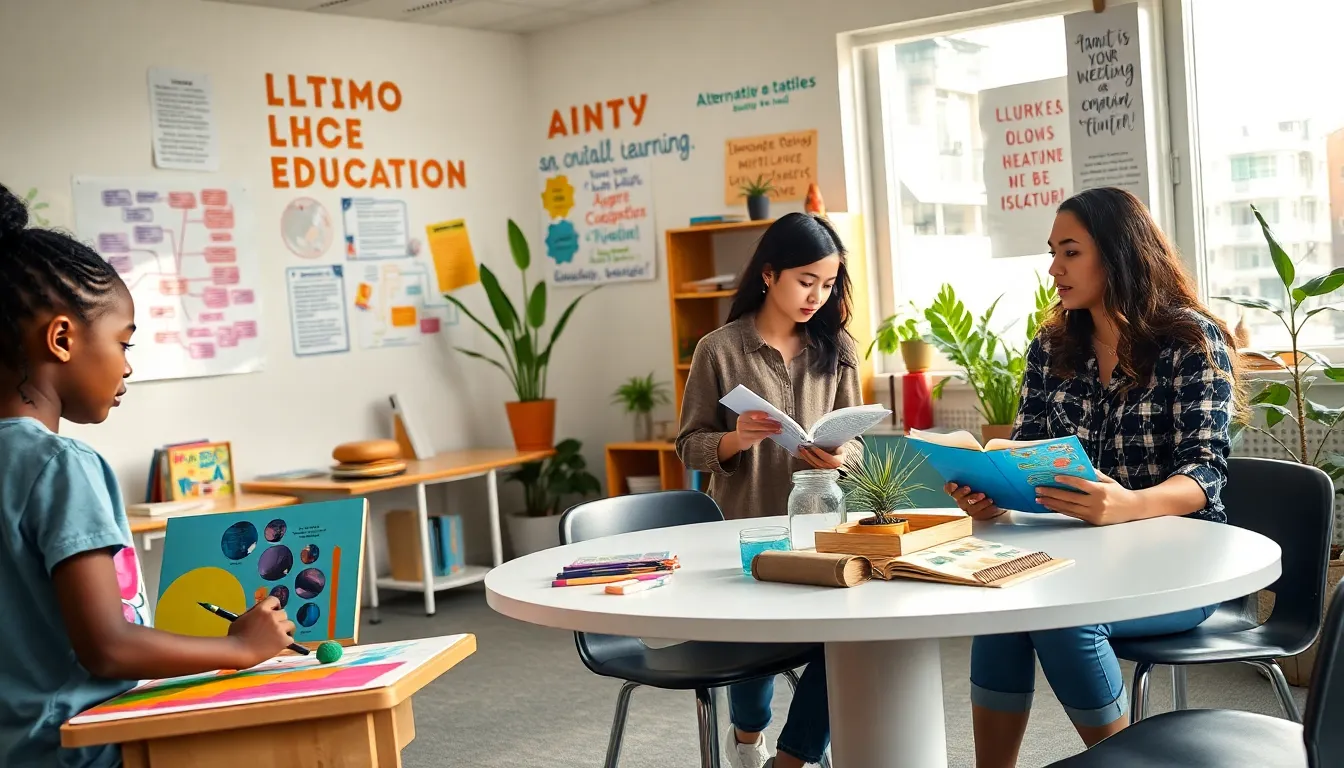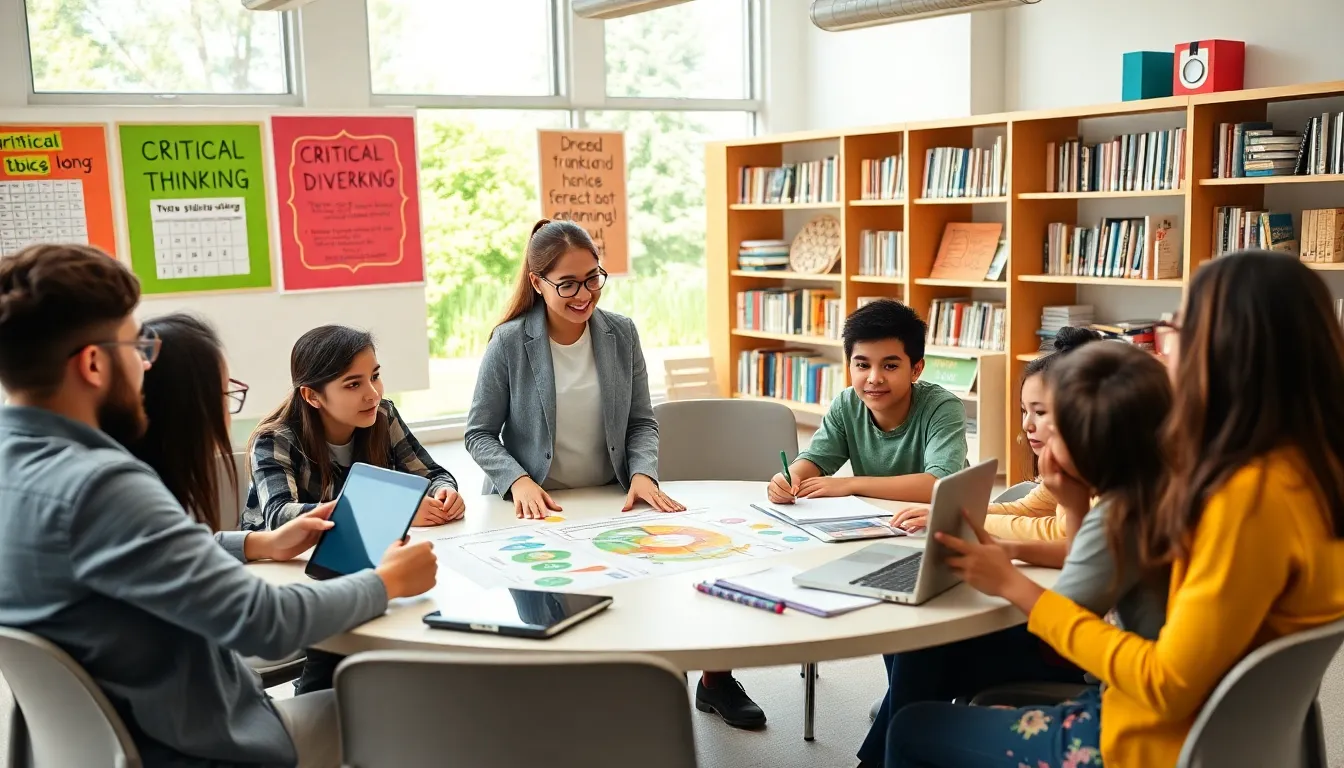In the bustling world of education, choosing the right path can feel like trying to find a needle in a haystack, if the haystack was also on fire and spinning. But don’t worry, alternative education is here to cool things down. With its diverse approaches and innovative methods, alternative education offers a fresh perspective for students and parents alike. Whether it’s through hands-on learning, project-based curriculums, or simply a more flexible schedule, alternatives to traditional schooling are sprouting up everywhere. So buckle up, and let’s jump into the remarkable world of alternative education and discover how to find the right fit near you.
Table of Contents
ToggleWhat Is Alternative Education?

Alternative education refers to education outside the traditional school systems. It’s designed to cater to diverse learning styles, needs, and interests, offering a more personalized approach to learning. Unlike the rigid framework of conventional schools, alternative education encourages creativity and critical thinking, allowing students to thrive in environments that resonate with them. These programs often embrace unique philosophies and teaching methods, enabling students to engage with the material in innovative ways. From Montessori schools to homeschooling and online learning platforms, the options are vast and varied. The essence of alternative education lies in its flexibility and emphasis on holistic development, straying from what many consider the one-size-fits-all model.
Types of Alternative Education Programs
Alternative education comes in multiple flavors, each catering to a different set of learning preferences and philosophies. Here are a few notable types:
- Montessori Schools: These institutions focus on hands-on, child-centered learning. Instead of traditional lectures, kids engage in self-directed activities, fostering independence and creativity.
- Waldorf Schools: Emphasizing the arts and nature, Waldorf education integrates a rich curriculum that balances academics with artistic endeavors, ensuring a well-rounded education.
- Unschooling: It may sound radical, but unschooling is about letting children direct their learning based on their interests, often leading to a more passionate pursuit of knowledge.
- Online Learning: Virtual platforms offer curriculum flexibility and enable students to learn at their own pace, making education more accessible.
- Project-Based Learning (PBL): This approach centers around students working on specific projects, allowing for deep dives into topics of interest and fostering collaboration.
These various types demonstrate that education can transcend traditional confines, providing a rich tapestry of opportunities for every learner.
How to Identify Quality Alternative Education Options
Finding a quality alternative education program may feel daunting, but it doesn’t have to be. Here are several steps to help navigate the maze of choices:
- Research: Begin by checking local listings and online resources that list alternative schools in your area. Websites like GreatSchools and Niche can provide valuable insights and reviews.
- Visit Schools: Once you have a list, schedule visits to observe classrooms in action. Pay attention to the teaching methods, class sizes, and overall atmosphere.
- Ask Questions: Engage with teachers and administrators. Inquire about their educational philosophy, how they address individual learning needs, and what kind of support systems they offer.
- Check Accreditation: Ensure that the program is accredited (if applicable), providing assurance that the education provided meets certain standards.
- Connect with Parents: Talking to parents of current students can offer real-world insights into the strengths and weaknesses of various programs.
By actively engaging in this process, individuals can make informed choices that align with their educational goals.
Benefits of Alternative Education
The benefits of alternative education are numerous and can significantly impact a student’s educational experience:
- Personalization: Teaching methods can be tailored to suit individual learning styles, making education more meaningful.
- Increased Engagement: Interactive and hands-on approaches can make learning more exciting and relevant for students, sparking curiosity and enthusiasm.
- Emphasis on Life Skills: Many alternative programs focus on developing critical thinking, problem-solving, and collaboration skills, preparing students for real-world challenges.
- Community Involvement: Alternative education often promotes community engagement, allowing students to learn through real-life experiences while forming meaningful connections.
- Flexible Learning Environment: With alternatives like homeschooling or online education, families can adjust schedules around their lives, making education more accessible.
Eventually, these benefits highlight how alternative education can empower students to take ownership of their learning journeys.
Challenges and Considerations
While alternative education is often a breath of fresh air, it’s important to consider some challenges:
- Lack of Structure: Some students may thrive on a strict schedule and may struggle in looser, more flexible environments.
- Social Interaction: Students in independent or online programs might miss out on daily social interactions that come naturally in traditional schools, although many alternatives offer social opportunities.
- Parental Involvement: In homeschooling or cooperative learning environments, parents often need to play a more active role, which can be a significant time commitment.
- Resource Availability: Depending on the type of program, some alternatives may lack the same level of resources (like labs or facilities) that traditional schools provide.
These considerations are vital in the decision-making process, ensuring that families make informed choices that best suit their child’s needs.
How to Get Started with Alternative Education
Ready to jump into the world of alternative education? Here’s a roadmap to help get you there:
- Know Your Child’s Needs: Understanding how your child learns best will guide your choices. Are they visual learners? Do they thrive in social settings?
- Explore Options: Research the various types of alternative education available. Consider location, program structure, and curriculum focus.
- Visit Programs: Taking a tour of a few schools or programs is crucial. Engaging with teachers and other students can provide a feel for the environment.
- Consult with Experts: Getting advice from educational consultants or therapists can help identify the best fit for your child’s unique needs.
- Prepare for Transition: If moving from a traditional system, help your child understand the new approach. Encourage open discussions about expectations and experiences.
By following these steps, families can hopefully ease into this alternative path with confidence and clarity.



